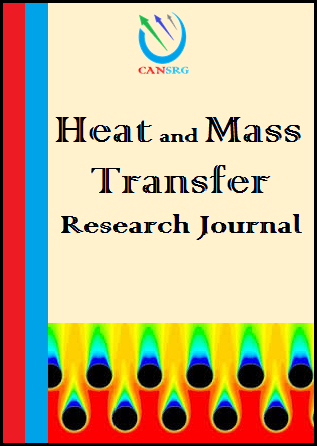
CanSRG

Heat and Mass Transfer Research Journal (HMTRJ)
Research Article
Using Surfactant to Enhance the Nucleate Pool Boiling Heat Transfer
Faculty of Engineering, Modern University, Cairo, Egypt
Submitted: January 29, 2018; Revised: December 17, 2018; Accepted: December 18, 2018
Abstract
In the present work, a controllable test rig is implemented to investigate experimentally the nucleate pool boiling heat transfer from heated tubes to an aqueous solution of different surfactants. Three tubes are made of brass, aluminum, and stainless steel with almost the same surface roughness. Each one of these tubes is tested with three aqueous solutions of surfactant; the anionic sodium dodecyl sulfate (SDS), the anionic sodium lauryl ether sulfate (SLES) and the nonionic octylphenol ethoxylate with 9-10 moles of ethylene oxide (TRITON X-100). Each one of the three aqueous solutions was investigated at concentrations of 0, 200, 500, 1000 and 1500 ppm. The experimental investigations showed that, for all studied cases, the heat transfer coefficient increased with the increase of heat flux. For all cases of SLES and SDS, the heat transfer coefficient increased with the surfactant concentration but with TRITON-X, it increased with the concentration until the value of 500 ppm, and beyond this value, it did not exhibit a considerable increase. The rate of increase in the heat transfer coefficient starts to decrease with the higher values of surfactant concentration. The highest enhancement in the heat transfer coefficient over that of the distilled water was achieved when using SDS solution at concentration 1500 ppm on a brass surface, whose heat flux is 120 kW/m2, where this enhancement was about 185%.
Keywords
Heat Enhancement; Pool Boiling; Surfactant.
Downlaod Full Text >>
This work is licensed under a Creative Commons Attribution 4.0 International License.